Growing fruit on vines is an ancient practice that provides numerous benefits. Whether you’re looking to establish a home garden of your own, expand your commercial horticultural business, or simply learn more about the fascinating process of cultivating fruits in this way, understanding why it makes sense to grow fruit on vines is key. In this article, we’ll explore the various advantages and challenges associated with vine-based cultivation so you can decide if growing some of your favorite edibles on this type of support structure might be right for you!
Why Grow Fruit on Vines?
Growing fruit on vines is a time-honored tradition that has been practiced for centuries. Vine crops such as grapes, kiwi, and passionfruit thrive in warm climates and can produce an abundance of delicious fruit. Growing fruit on vines is beneficial because it saves space.
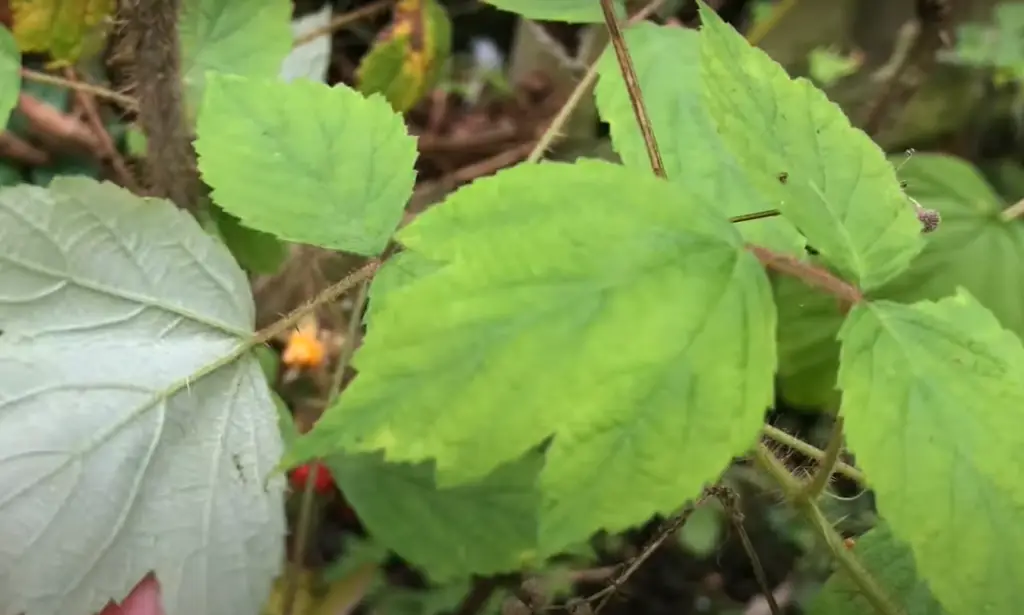
Vines can grow up supports such as trellises or pergolas, allowing for vertical use of space. [1] Additionally, fruit grown on vines tends to be healthier and more flavorful than store-bought fruit. For those looking to get in touch with nature and enjoy the satisfaction of growing their own food, growing fruit on vines is a great option. With a little bit of effort and patience, anyone can experience the joy of biting into a juicy, sun-ripened grape or kiwi.
Benefits of growing fruits on vines
Growing fruits on vines has many advantages. Here are a few:
- Fruits grown on vines can be easily accessed since they hang within reach. This is especially beneficial for those with physical disabilities who may not be able to climb trees or step stools, making it easier to harvest their own produce.
- Vines are usually quite disease resistant and require minimal maintenance compared to other types of fruit production methods such as trees and bushes. This makes caring for them much simpler and less time consuming for the gardener.
- The vertical nature of vine growing also allows for more efficient use of space in comparison with horizontal growing methods, allowing you to grow a large amount of produce in an area that would normally accommodate fewer plants horizontally.
- The fruit produced on vines are usually longer lasting and better tasting than those grown in other ways, meaning you can enjoy homegrown produce for a much longer time.
- Vines also make harvesting fruits easier since they hang within reach, making it easier to pick them without the need of ladders or other cumbersome tools. This is especially advantageous for elderly or disabled gardeners who might not be able to access fruit in other ways. Overall, growing fruits on vines has many advantages that makes it an attractive option for home gardeners looking to maximize their yield while minimizing maintenance. With its increased disease resistance and efficiency of space utilization, it’s no surprise that vine growing is becoming increasingly popular among home gardeners!
Side Effects
Although growing fruits on vines has many advantages, there are also some drawbacks to consider. Here are a few:
- The vertical nature of vine crops can make them more susceptible to pests and disease since the foliage is closer together than with horizontal plantings. This means that a gardener must take extra precautionary measures in order to adequately protect their harvest from these potential issues.
- Vine crops also require more support structures such as trellises or netting in order to keep the fruit off the ground and away from predators or other critters that might be interested in it.
- Fruits grown on vines are typically smaller and less sweet than those grown horizontally due to their increased exposure to the elements.
- Finally, vines can take up a lot of space if they are not properly managed or pruned back. This means that gardeners must be sure to have enough room for their vine crops in order to maximize yield and reduce competition between plants. Overall, although there are some drawbacks associated with growing fruits on vines, the advantages usually far outweigh the negatives when done correctly. With proper maintenance and pest control measures in place, home gardeners can enjoy healthy harvests of sweet fruits while using minimal resources!
Climbing Fruits That Grow on Vines
There are many delicious fruits that can be grown on vines. Here are a few of the most popular varieties:
- Grapes: One of the most common and recognizable fruits to grow on vines, grapes are both sweet and versatile. They can be eaten fresh, dried, or used in recipes such as jams and wines.
- Kiwis: These fuzzy fruits have a unique flavor and texture when ripe, making them perfect for snacking or adding to salads.
- Melons: While melons don’t typically grow on vines like grapes or kiwis do, they can still benefit from some support structures like trellises or netting to keep them off the ground and away from pests.
- Strawberries: Strawberries are a sweet treat that is both delicious and nutritious. If you’re looking for an early harvest of fresh fruits, strawberries grown on vines may be just what you need.
- Armenian cucumber: These cucumbers have a mild flavor and can be used in salads or pickles. -Watermelons: Watermelons are another sweet treat that can be grown on vines. If you’re looking for something to enjoy during those hot summer days, watermelons may just do the trick!
- Passionfruit: Winter passionfruit is a great way to enjoy the sweet flavor of fruit even during the colder months. Overall, there are many delicious fruits that can be grown on vines.
- Dragon fruit: Dragon fruit is a type of cactus fruit which has a sweet flavor and unusual texture. It’s perfect for adding to smoothies or using as a topping on desserts.
- Blackberry: Blackberries are a popular fruit that can be successfully grown on vines. They have a sweet, tart flavor and can be used in many different recipes or enjoyed fresh.
- Hops: Hops are a type of flower that are used to give beer its flavor and aroma. They can be grown on vines and require very little maintenance, making them perfect for home brewers who want to save money by growing their own supplies.
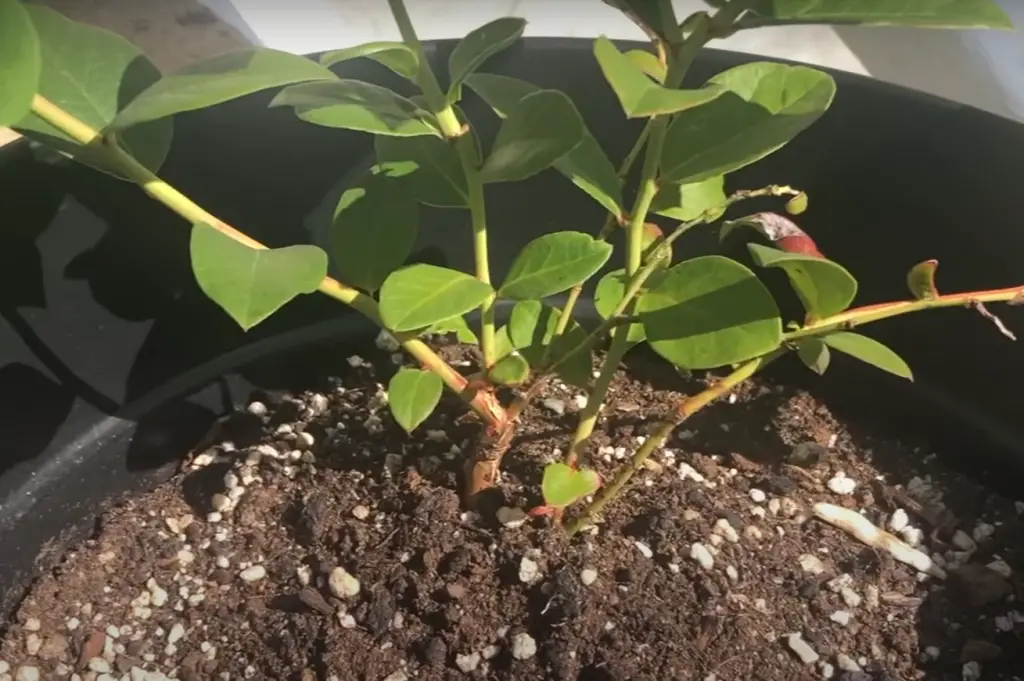
Overall, there is an almost endless variety of fruits that can be grown on vines. Whether you’re looking for something sweet or tart, there’s sure to be something that will fit your tastes!
How To Grow Fruit on Vines
Growing fruits on vines isn’t difficult, but there are some steps that you’ll need to follow in order to get the best results.
Four Seasons of Vine Work
In order to get the best results with your vines, you’ll want to make sure that they receive proper care throughout the year. Here’s what you’ll need to do in each of the four seasons:
- Winter: During the winter, you’ll want to prune your vines back in order to promote new growth and keep them healthy. This will also help reduce overcrowding so that each plant has more room to spread out. [2]
- Spring: In the springtime, you’ll need to start fertilizing your plants in order to give them the nutrients they need for optimal growth. You should also begin training your young vines on their support systems, such as trellises or wires.
- Summer: Once summer arrives, it’s time for pollination! Make sure that all of your flowers are open and available for insect pollinators so that they can do their job effectively and produce healthy fruits.
- Fall: During the fall, you’ll need to begin harvesting your fruits and preparing for the winter. Remove any dead or diseased vines and start trimming back any excess foliage in order to minimize pest damage over the colder months.Once you have these four steps down, growing delicious fruit on vines can be easy and rewarding!
Ways to Trellis Fruit
Trellising is often an important part of growing fruits on vines. It helps to support the heavy fruits and can also increase air circulation, which helps reduce the incidence of diseases. Here are some of the most common ways to trellis your fruit vines:
- Fencing: This is one of the simplest methods for training a vine up a trellis or support structure. All you need to do is attach fencing material (such as chicken wire) to posts or stakes that have been placed around your garden area. The vines then have something to cling onto as they climb upwards!
- Canes: You can also use wooden poles or metal canes in lieu of fencing material in order to create a trellis. These are usually more aesthetically pleasing and can be used in a variety of settings.
- Tiered system: If you have a larger area, you may consider using a tiered trellising system. This is often composed of multiple levels of poles or wires that help to support the vines as they climb upwards. It’s important to make sure that all of your poles are securely fastened into place before training your vines on them in order to prevent any accidents! By utilizing one (or more) of these trellising methods, you can make sure that your fruits stay off the ground and grow strong!
Types of Trellis
Vines can be supported by a number of different types of trellises.
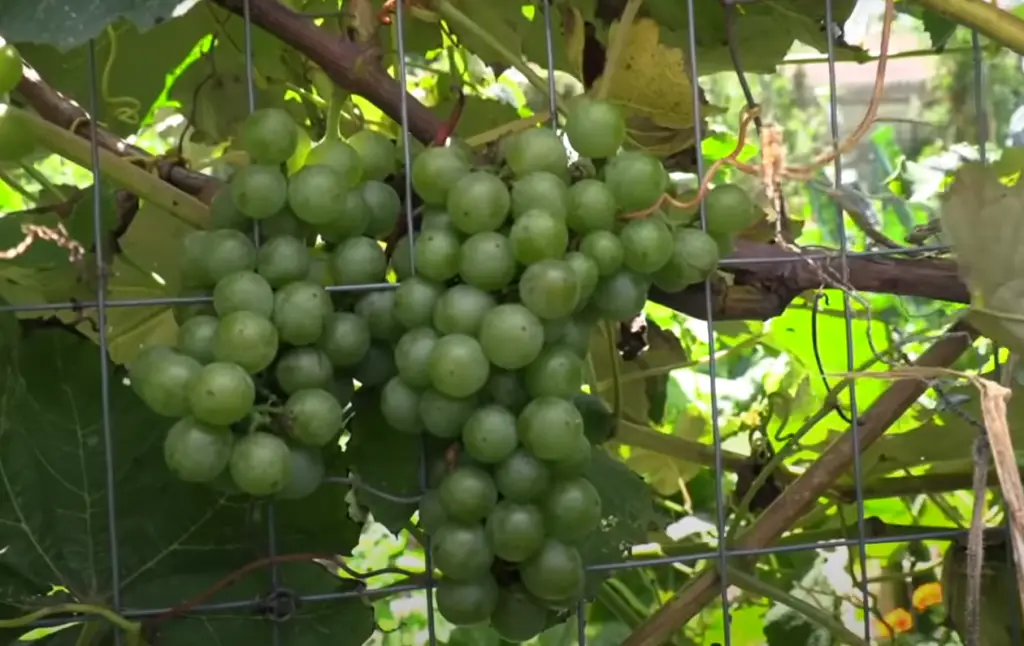
The type of trellis you choose will depend on the specific kind of vine and your aesthetic preferences. Some common types of trellises for vines include:
- Obelisk: An obelisk is a tall, narrow structure with four sides that come together in an apex at the top. This type of trellis is ideal for heavy-duty vines such as clematis or morning glory, and it can also be used to create a focal point in the garden.[3]
- Arbors: Arbors are often used to provide shade and shelter for outdoor seating areas. However, they can also be used to support vines such as grapes and ivy. Arbors are typically made of wood or metal and can feature lattice sides for extra support.
- Fences: Fences can be used to support various types of vines, including ivy, grapevines, and other climbing plants. The height of the fence will depend on the vine’s size and growing habits.
- Pergolas: Pergolas provide a strong structure for supporting large climbing vines in the garden. They also create a beautiful outdoor living space where you can relax or entertain guests. [4]
- Tripods: Tripod trellises are often used for smaller vines such as morning glory, honeysuckle, and clematis. They consist of three posts that are joined together at the top, and they provide a simple yet elegant support structure for vines.
No matter what type of trellis you choose, make sure it’s properly secured in the ground and able to support the weight of the vines. Regularly check your trellis for signs of damage and replace it if necessary.
Advantage of Trellising
Trellising is a great way to provide support for your vines and keep them healthy and growing. There are many advantages to trellising, including:
- Better air circulation: Trellising increases the availability of air around the vine’s foliage, which promotes healthier growth. [5]
- More sunlight access: Vines that are supported on a trellis will get more direct sunlight than those that aren’t, allowing for better photosynthesis and greater yields.
- Easier harvesting: Trellised vines make it easier to harvest fruit or vegetables without damaging the plant.
- Improved aesthetics: A well-constructed trellis can enhance the look of your garden by providing structure and interest.
Planting
Once you’ve chosen the right trellis for your vines, you can start planting. Here are some steps to help you get started:
- Choose a sunny spot and prepare the soil by tilling it and adding compost or other organic material.
- Install the trellis before you plant the vine.
- Carefully transplant the vine into its new home and make sure it is firmly in place against the trellis.
- Water thoroughly after planting and then mulch around the base of the vine to protect it from extreme temperatures and moisture loss due to evaporation.
- Prune as needed throughout the year to keep your vine healthy and encourage growth.
Growing
Once your vine is planted, there are a few tips to keep in mind as it begins to grow:
- Provide plenty of water. Vines need consistent moisture throughout the growing season.
- Prune regularly to promote healthy growth and remove dead or damaged branches.
- Train vines onto the trellis using ties or wires for support.
Mulch around the base of the vine to protect its roots from extreme temperatures and conserve soil moisture. With a little bit of care and attention, your vines should soon be thriving on their new trellis!
Harvesting
The time for harvesting your vines will depend on the type of vine and what you are growing.
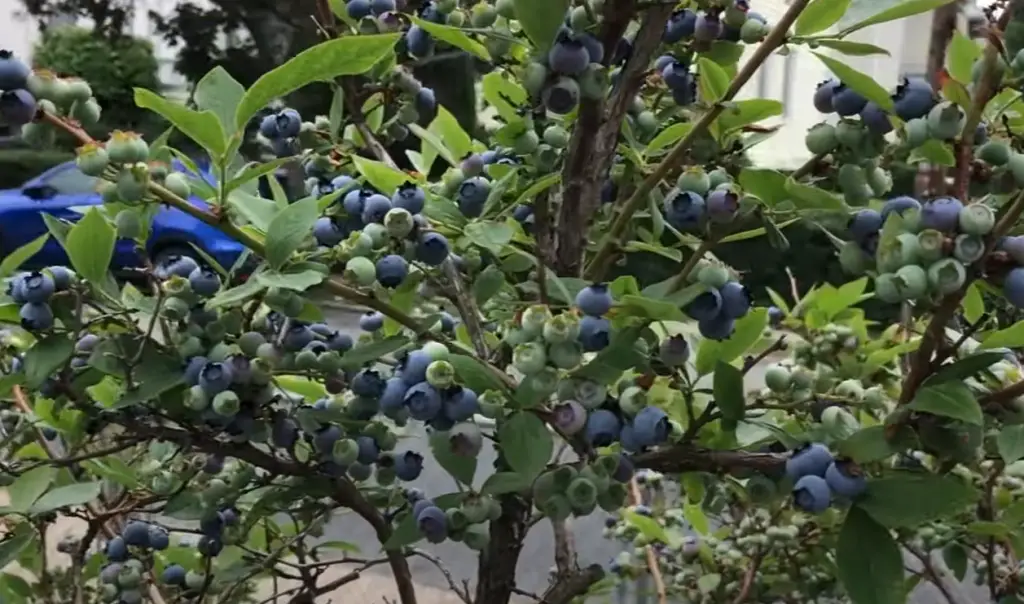
Most fruit-bearing vines should be harvested when they’re ripe, while vegetables and herbs can usually be picked as soon as they’re large enough. When harvesting from a trellis, always take care not to damage the plant or pull too hard on the branches.
Finally, remember to harvest regularly so that your plants keep producing!Maintaining
Maintaining your trellis is an important part of keeping your vines healthy and productive. Here are some tips to keep in mind:
- Inspect the trellis regularly for signs of damage or wear and tear. Make repairs as needed.
- Prune back any branches that are growing out of control, or any excess growth that isn’t helping support the vine.
- Remove any weeds around the base of the trellis to avoid competition with your plants for nutrients and water.
Regular maintenance will ensure your trellis remains in good condition for many years to come!
How to Grow Vines in Containers
If you don’t have the space for a traditional trellis in your garden, then growing vines in containers is an excellent alternative. Here are some tips for container-grown vines:
- Choose a large enough pot to accommodate the roots of the vine and allow for adequate drainage.
- If possible, choose a pot with drainage holes at the bottom so excess water can escape.
- Make sure that the pot is securely fixed to a table or other structure so it won’t tip over.
- Plant young vines in containers and prune regularly to control their size and shape.
- Water regularly – container-grown vines require more water than those grown in the ground, as they tend to dry out quickly due to evaporation.
Pests and Diseases
Like any other type of plant, vines are susceptible to pests and diseases. Common problems include fungal infections, aphids, slugs, and spider mites. If you notice any signs of pests or disease on your vine, take action immediately to prevent it from spreading.
Protection
Some preventative measures include:
- Pruning away affected parts of the plant.
- Spraying with a natural insecticide or fungicide.
- Applying organic mulch around the base of the vine to discourage pests and help conserve water.
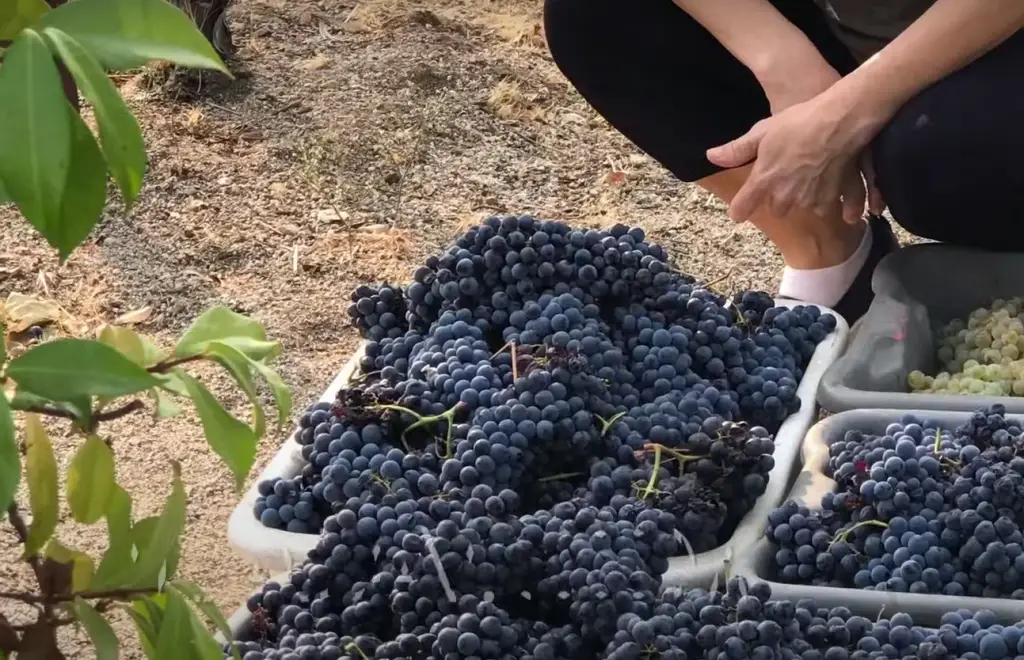
Wrapping the base of the vine in horticultural fleece during cold weather, to protect it from frost damage. By following these steps, you can keep your trellised vines healthy and productive for many years to come!
FAQ
Which Plant is a Vine?
A vine is any plant that grows by attaching itself to a surface or structure. Common examples include grapes, kiwi fruits, clematis, morning glory, and ivy.
Do Vines Produce Fruit?
Yes, vines produce fruit. Vines are a type of perennial plant that can bear fruits each year if they are given the right care and conditions. Different types of vines will produce different types of fruits – some will produce grapes, while others may produce berries or melons.
Are Vines Trees or Plants?
Vines are considered plants, not trees. Trees are much larger and have woody stems that branch out from a single trunk. Vines, on the other hand, tend to be smaller with slender non-woody stems that climb or cling to surfaces for support.
What Plants Grow Like a Vine?
Many types of plants can grow like vines, including ivy, clematis, wisteria, honeysuckle, and morning glory.
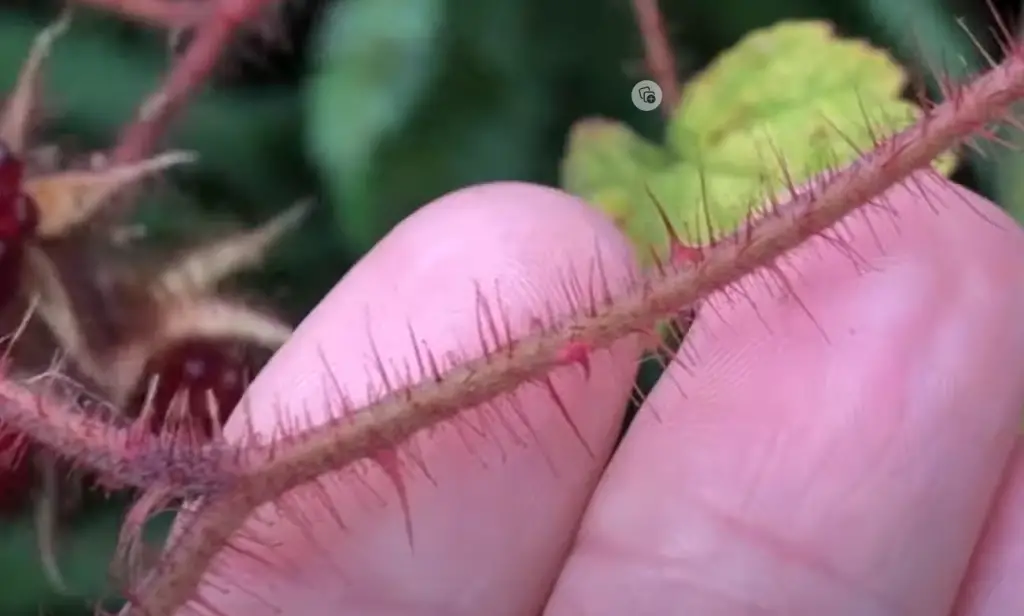
These plants will use structures such as trellises or fences to climb up and spread out.
What Makes Vines Grow?
Vines need sunlight, water, and nutrients to grow.
Additionally, regular pruning can help promote healthy growth in vines. Finally, proper soil preparation is essential for healthy vine growth.Do Vines Need Sunlight to Grow?
Yes, vines need sunlight to grow. Vines benefit from at least six hours of direct sunlight per day in order to thrive. If the vine does not receive enough sun, it will become spindly and weak. Additionally, too much shade can cause a vine to produce fewer flowers and fruits. It is important to find the right balance between sun and shade for your vines to ensure healthy growth.
Useful Video: Fruits that grow on vines
Conclusions
As you can see, growing fruit on vines can be a fun and rewarding experience. Whether you are interested in learning about this age-old practice or have been cultivating fruits in the traditional manner for some time now, there are numerous benefits associated with vine-based cultivation. With its multiple advantages and potential challenges, taking the time to properly research and understand what is involved in growing fruit on vines makes good sense. If a home garden or commercial horticultural business expansion appeals to you, consider looking into local vine growers who may be able to assist in obtaining your desired harvest. For those who seek an even greater challenge, why not take the plunge and start your own vine-based cultivation project? No matter where you are on your journey of discovery into this fascinating method of producing delicious fruits, we hope you find this article fruitful!
References:
- https://getbusygardening.com/training-vines/#:~:text=Pole%20beans%2C%20morning%20glories%2C%20honeysuckle,t%20usually%20require%20much%20training.
- https://www.allaboutgardening.com/post-freeze-pruning/
- https://www.thespruce.com/how-to-make-a-diy-obelisk-trellis-5187165
- https://gardeningtips.in/how-to-build-a-pergola-for-climbing-plants-a-beginners-guide
- https://www.slowine.com/the-benefits-of-growing-grapes-on-tressels/





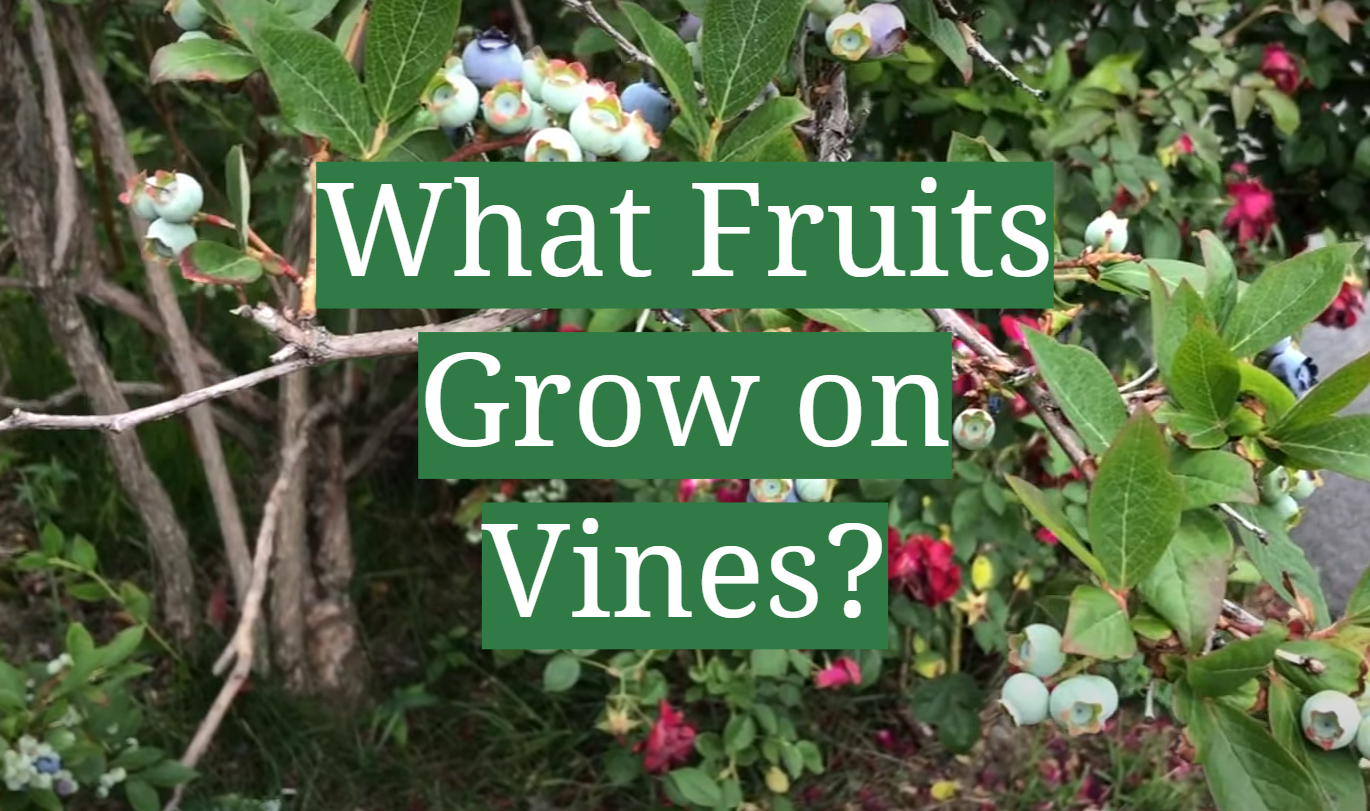




Leave a Reply
View Comments